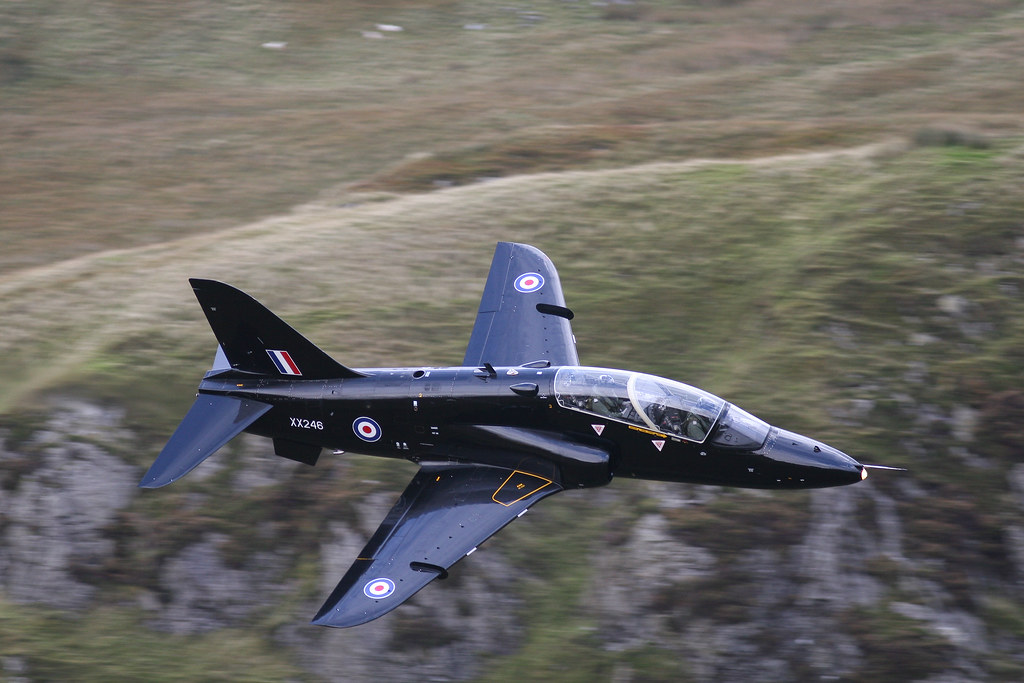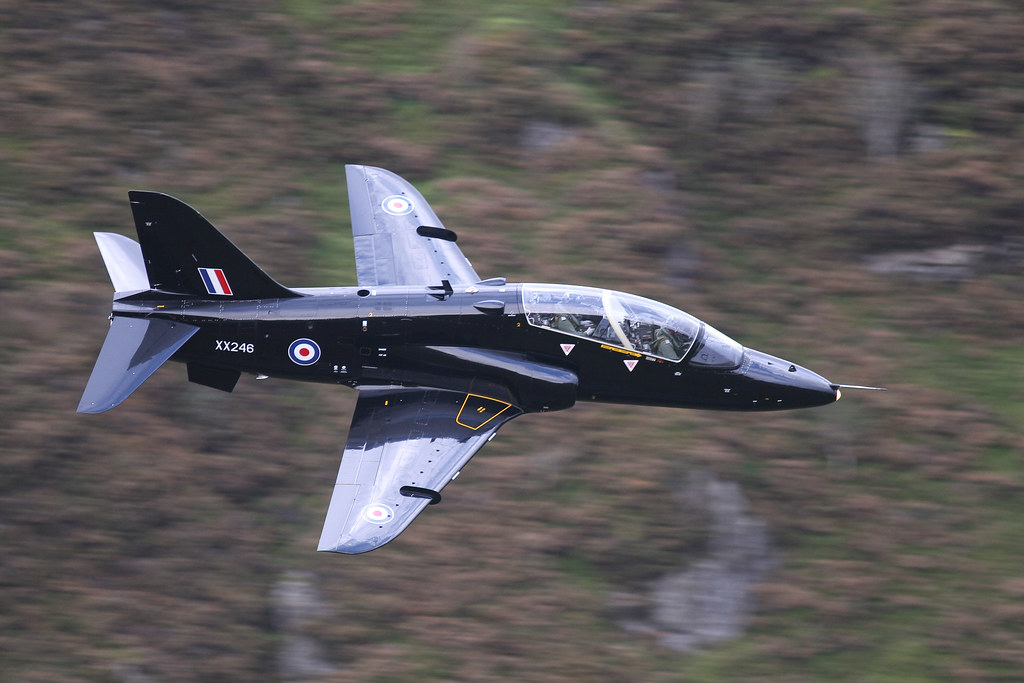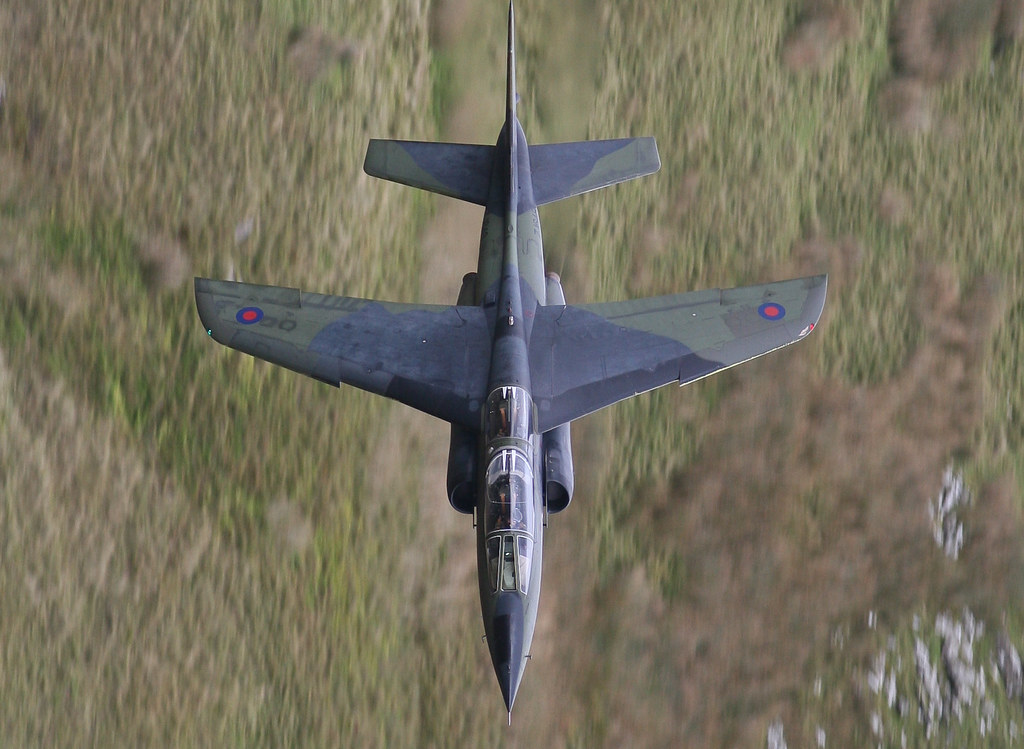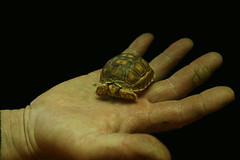Some Photos
Typically if your living in wales your going to see a hawk. These are used for training new pilots in fast-jet manauvering and control.

If you look closer you can see that its the instructor in the back of the jet is doing the flying on this pass

This is an Alphajet - Not used for training this time, this was one the QinetiQ jets from (I think) RAF Boscombe.
This pilot was obviously having fun as he tipped his wings towards the photographers, pushing it past the vertical so much that if you look at the high resolution version of this photo you can see the QinetiQ markings on the far side of the cockpit.

Technique
To get a good photo of a jet as it flies by you need to develop your panning technique this technique is used a lot in motorsports photography and in general, any photography where you wish to convey a sense of speed whilst keeping the main subject of the photo in sharp focus. For the shots in the mountains I use shutter speeds ranging from 1/400 to 1/3200 and ISO ranges from 200-1000 The main reason for the large ranges is the changes in light values from one end of the valley to the other. This is definitely not somewhere you can shoot in full manual.
Locations
The best place I have been for these photographs is a place called the Mach Loop in Mid Wales. It is at Corris, not far from Machyllneth.
The best place I have been for these photographs is a place called the Mach Loop in Mid Wales. It is at Corris, not far from Machyllneth.
There are fantastic location guides here
Equipment
Low flying aircraft prove to be one of the most challenging subjects to photograph. Typically you need a camera with a fast autofocus and some very decent quality glass* in front. Having a camera with virtually no shutter lag and a high rate of frames per second is pretty important too. I use a Canon 30D with a Battery Grip and a Canon 300 F/4L Lens.
Equipment
Low flying aircraft prove to be one of the most challenging subjects to photograph. Typically you need a camera with a fast autofocus and some very decent quality glass* in front. Having a camera with virtually no shutter lag and a high rate of frames per second is pretty important too. I use a Canon 30D with a Battery Grip and a Canon 300 F/4L Lens.





